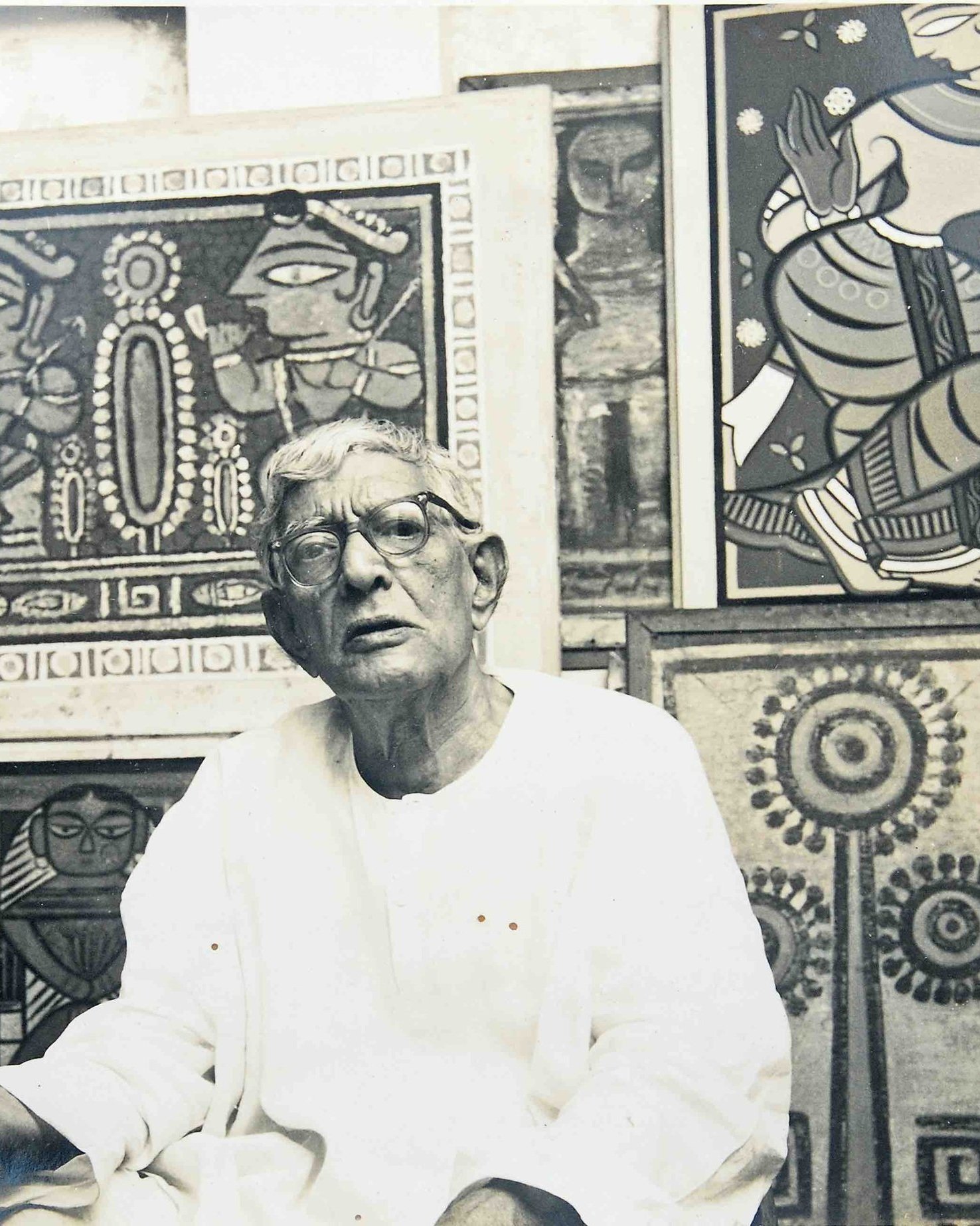Jamini Roy (1887 - 1972)
In the 1920s, many experiments in art practices took place in Calcutta and Santiniketan. Amidst this activity, the story of Jamini Roy, who turned to the folk arts of Bengal, is remarkable. Although trained at the Government School of Art, Calcutta, Roy’s artistic impulses were rooted in his growing years in Beliatore village in the Birbhum district of undivided Bengal at that time. Roy adopted the simplification of the forms, the bold, flat colours and the medium, material and themes of local folk paintings. He discarded expensive canvas and oil paint, and opted for the more inexpensive material and medium of the folk artist. He rendered images from Ramayana and Krishna Lila. He painted ordinary men and women from the village, reinventing popular images from the patua’s repertoire. Jamini Roy restricted his palette to seven colours - Indian red, yellow ochre, cadmium green, vermillion, grey, blue and white. These were mostly earthy or mineral colours.
The appropriation of folk idioms manifested in various ways. There was a phase in which he adopted the calligraphic brush lines of Kalighat patuas to create sophisticated forms. The austerity of lines only serves to highlight Roy’s superb control over brush. The lines drown lyrically and sometimes even sensuously with lampblack over white or pale grey background show not only vigour, but also the poetry latent in the human form. The paintings Baul and Woman Seated are excellent examples of this style.
Roy brought the sensibilities of a formerly educated artist to his appropriation of folk idiom. He cannot escape sophistication in his figuration. Moreover, the monumentality that he often brings to his figuration recalls the quality of classical sculptures.
Exhibition:
Masters Show
Jamini Roy | Untitled | Gouache on paper | 13.75 x 10.5 in


